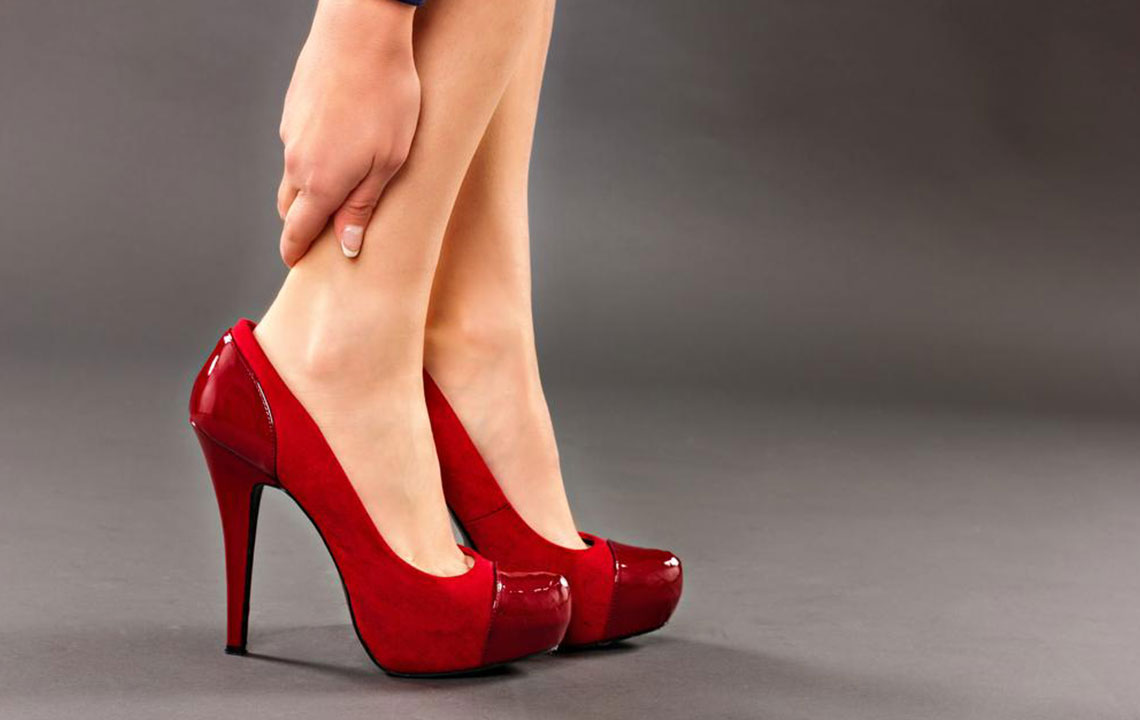Heel Pain Treatment Naturally At Home

Do you often wake up with painful heels? Experiencing difficulty while walking due to heel pain? Heel pain is one of the most common bone problems experienced by men and women. Yet, it does not have any serious health threat. In most of the cases, the pain gets healed on its own, while some may need medication to cure the condition. However, in some rare cases, pain becomes severe and patients complaining of getting restricted mobility from this. There are several causes for heel pain. While some suffer from it due to standing for prolong period of time, others may get it after some exercise. Diabetes or faulty shoes can also lead to heel pain.
Heel pain treatment is easily available with doctors. Yet, you can also apply home remedies to heal the condition. You can get remedies depending on the cause as well.
Apply ice-pack- This is one of the proven home remedies for the heel pain treatment. It not just reduces the pain but also helps in controlling the puffiness that often makes walking difficult. To relieve the pain, you can apply ice pack three to four times a day. Yet, the duration for applying ice-pack should not be more than ten minutes as it can make adverse effect on the epidermis and nerves. Also make sure that you are not applying ice directly on your skin.
Cold and hot water treatment- Many people have been able to relieve foot pain, especially heel pain by applying cold and hot water treatment. Take hot and cold water in different vessels. Dip your affected feet once in hot water and then in the cold one. Do this for ten minutes or so. While the cold water will check the inflammation, hot water will help in reducing the pain by maintaining proper blood circulation in the nerves.
Heel massage- Strained muscles and lesser blood flow in the veins often lead to heel pain. If that is the case with you, then heel massage can help in recovering the condition successfully. Yet, massaging the painful area just once will not serve your purpose. You need to get it done everyday till the pain is completely cured. Though this is an effective heel pain treatment, some people only get a temporary relief from this.
Epsom salt- If you are looking for an immediate relief from heel pain, Epsom salt can be your ideal choice. Mix three tablespoon Epsom salt in your bath tub and soak in it for around 20-25 minutes to get relief. If you cannot mix it in a bath tub, take a big bucket or any such vessel and pour a tablespoon Epsom salt in it. Soak your feet for 20 minutes for reducing the pain. Depending on your choice, you can apply some moisturizer on your skin after soaking it in Epsom salt, as it makes the skin dry.
Vinegar- In case, the heel pain has been caused by some pulls or sprains, you can try out vinegar remedy for your healing. Mix two tablespoon vinegar in one bathtub hot water. Soak heels in the water for half an hour or less and feel the comfort when you walk.
Asparagus- Someone who is looking for a holistic treatment of heel pain can surely consider about asparagus. Take a few asparagus and boil it in water. Eat it once it’s steamed up and feel the relief. Asparagus heals the pain by flushing out the excess fluid from the body, which leads to the inflammation.
Clove oil- Clove oil is known for boosting blood circulation in the body, which in turn heals the pain. To reduce heel pain, you just need to take a few drops of this oil and massage it in the affected area. For the best effects, you can do it at night before going to bed.
Chamomile- Pain caused due to injury or inflammation of the heels can be completely healed by using chamomile tea. Prepare chamomile tea and soak your feet in it for around 15 minutes. Do this every day till the pain is completely healed. Chamomile tea can also be effective in pains caused due to diabetes.
Ginger- Increase the amount of ginger in your food or drink ginger tea for three to four times a day to heal the pain as well as swelling in your heel. Ginger not only heals pain from injury but also is beneficial for arthritis pain.This is one of the most effective heel pain treatment.
You can also rely on arnica, mustard seeds and curcumin for relieving the pain in your heel. However, if you do not find any improvement by applying the home remedies, you can always take an over-the-counter pail relieving pill or ointment. Consulting a doctor is necessary if the pain becomes a chronic condition or continues for more than a fortnight.


